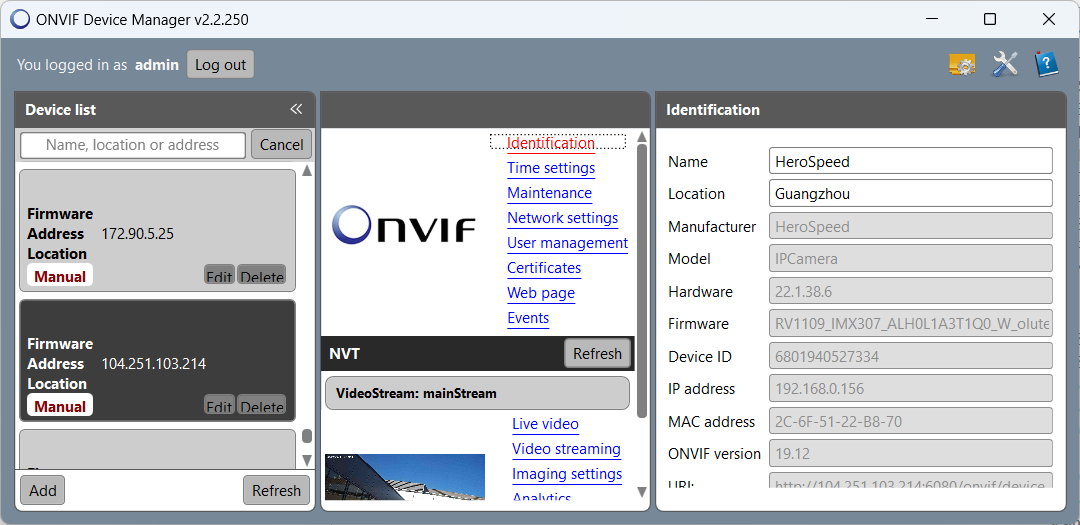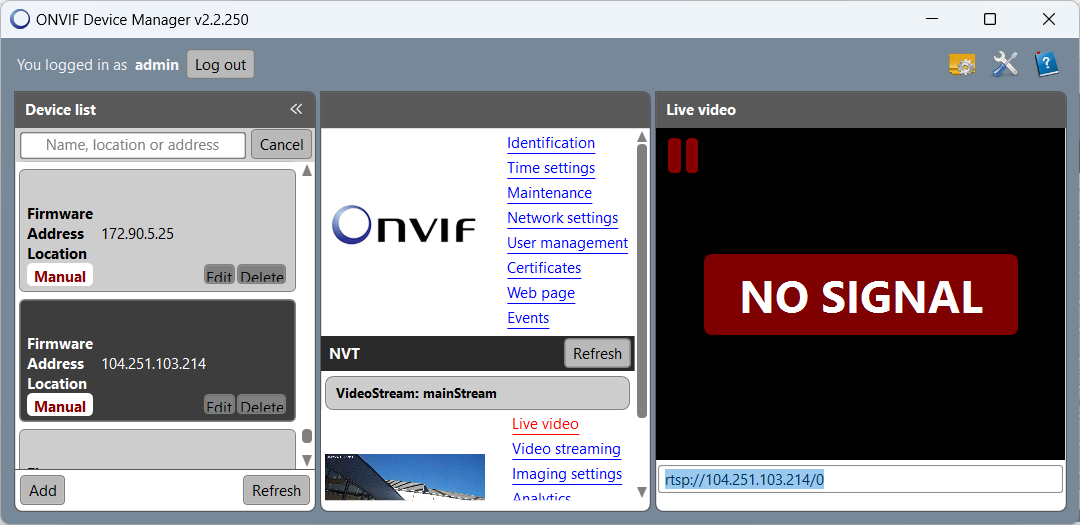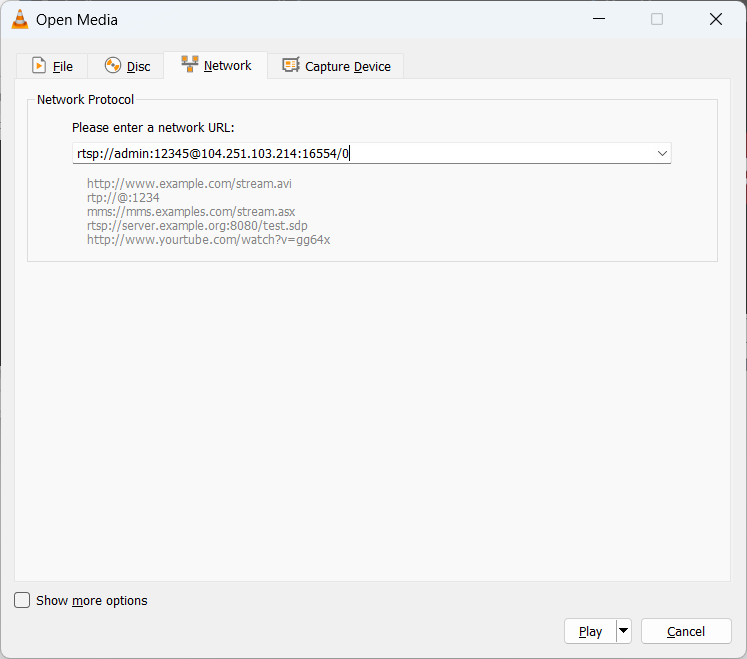Testing connectivity
In order to connect a camera to cloud services through the ONVIF protocol, you need to ensure that the camera is accessible remotely via port forwarding. If you are experiencing connectivity issues, please follow the troubleshooting steps below.
1. Check Port Accessibility
Using the online tool below, check that your HTTP (80 by default) and RTSP (554 by default) ports are open
https://www.yougetsignal.com/tools/open-ports/
Some IP cameras have a dedicated Onvif port. If this is the case for your camera, please find it the camera settings and use it further instead of HTTP port
2. Test with ONVIF Device Manager
2.1 Download and install ONVIF Device Manager
2.2 Run the app and log in with the admin-level camera credentials in the top left corner.
2.3 Connect to your camera using the URL
http://[camera_ip]:[http_port]/onvif/device_service
for example:
http://104.251.103.214:16080/onvif/device_service

3. Validate RTSP Streaming with VLC or FFmpeg
3.1 Retrieve the camera Live RTSP URL from the ONVIF Device Manager (bottom right corner)

3.2 Preserving the “path” change it to the following format
rtsp://[username]:[password]@[camera_ip]:[camera_port]/path
for example:
rtsp://admin:12345@104.251.103.214:16554/0
3.3 Use the above URL in VLC player (Media > Open Network Stream) or ffplay.

4. Test ONVIF Response with CURL
Run the following command using your ONVIF URL from step 2 in the command line or the online CURL tool and check the response message.
curl http://[camera_ip]:[http_port]/onvif/device_service -d '<s:Envelope xmlns:s="http://www.w3.org/2003/05/soap-envelope"><s:Body xmlns:xsi="http://www.w3.org/2001/XMLSchema-instance" xmlns:xsd="http://www.w3.org/2001/XMLSchema"><GetAudioOutputConfigurationOptions xmlns="http://www.onvif.org/ver10/device/wsdl"/></s:Body></s:Envelope>'